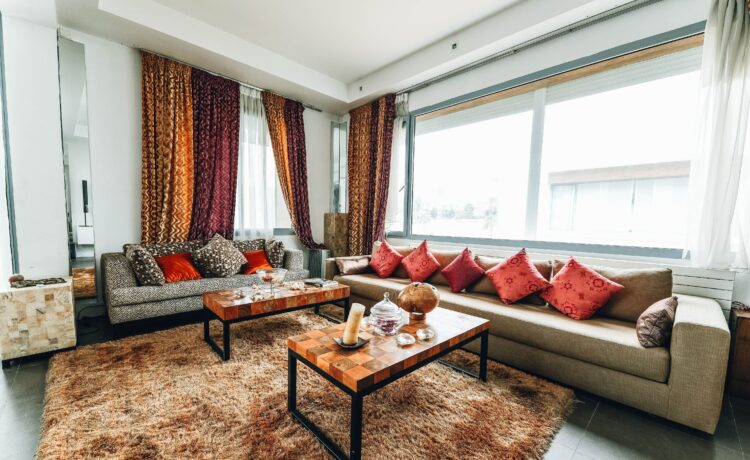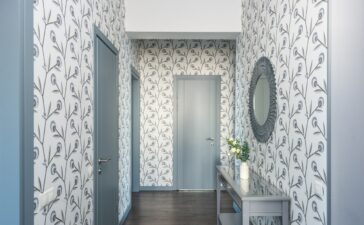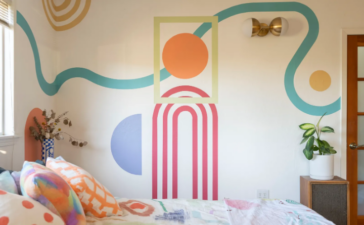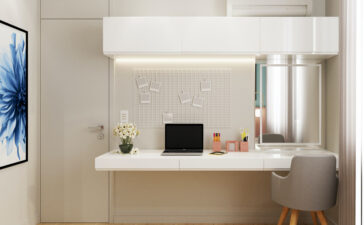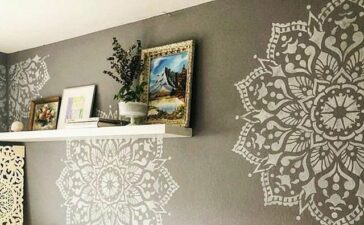Designing your house is one of the best things to do; you get to let your creativity flow. Your personality comes out and is showcased throughout the house. You get to pick the furniture, color scheme, kitchen equipment, decorations, and clothing.
If you need clarification about how to decorate, then there are so many stylish guides you can find online. You can find a decorating style you like and can use when planning your home decor.
One small decorating item you should take care of is the rug. Yes, you read right, a rug. A rug is a statement piece that can bring the room together if done right.
A well-placed rug can add warmth and depth to the room. In this article, you will learn about rug sizes, which rug sizeswork for which room, why you should buy a rug, what to look for when buying a rug, where to place a rug in your home, and other necessary things when adding a rug to your home.
Rug Sizes for Every Room in Your House
1. Living Room
The living room is the most crucial room in a house since it attracts the most visitors. This room is decorated the most prominently with decor accessories. You should measure the available space and consider how to arrange your furniture. In the living room, all the furniture legs can be on top of the rug, the sofa, chairs, and side tables. For this, you will have to get a large rug. Or you could set only the furniture’s front legs on top of the rug. Keep at least one foot of exposed carpet or floor on all four sides of the rug.
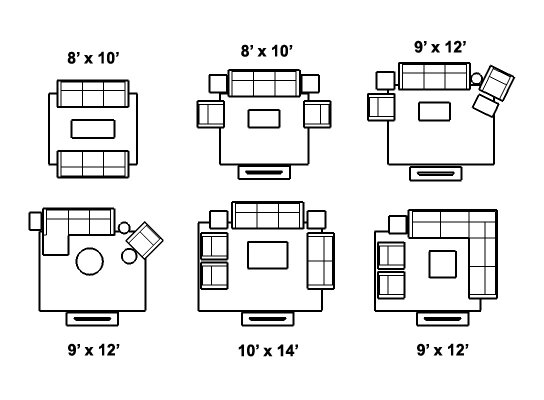
2. Dining Room
In the dining room, the rug makes a really good frame for the dining table and chairs set. The rug sizes depend on the dining table; the rug should be large enough to cover the table and the four legs of all the chairs, even if the chairs are pulled all the way out from the table. If the rug is not large enough, then the chair legs will get caught on the edge of the rug and become unstable; the chair or you could even fall due to the instability. The chair legs could even scratch the floor. It said that you have the rug extend 2-3 feet from under the table; there should be enough room for the chairs to be able to move in and out without any concerns.
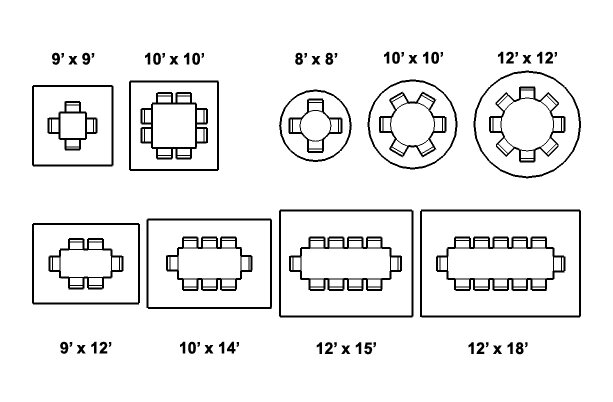
3. Bedroom
For the bedroom, the rug is centered around or under the bed. Even if the bed is pushed against the wall, the rug is still the centerpiece of the room. Rugs create a warm environment and a cozy feel in the bedroom. You also get a soft place to put your feet first thing in the morning. First, you need to decide if you want the rug to be completely or partially under the bed.
If you have a King Bed, then the rug coverage should be around at least 2 feet around the bed and extend to the nightstand’s ends. The rug should reach the nightstand’s far end, but if the rug reaches around halfway underneath the tables, it will be fine. For a Queen Bed, find a rug that reaches from underneath the bed to the nightstand’s edge closer to the bed. Get a rug that extends out from the bed’s foot by 2-3 feet.
On a full-size bed, you can place a 6’ x 9’ rug; it will extend to the nightstands. Other rug sizes include 5’ x 8’ and 8’ x 10’. For Twin Beds, a 5’ x 8’ or 6’ x 9’ works well; the rug will extend slightly out on the bed’s sides and foot but expose the head area and nightstands. A child’s bedroom is extremely different from an adult’s bedroom. Place a rug on the bottom two-thirds of the child’s bed, with space for a nightstand and play area. Choose a 6’ x 9’ or 7’ by 10’ rug for a twin bed in a kid’s bedroom and a 7’ x 10’ or 8’ x 10’ for a full-size bed in a kid’s bedroom. For children, rugs come in fun shapes and patterns, while there are even educational ones.

4. Hallway or Entryway
The rug is the central focal point of the hallway and entryway. This is where you should place runners that are long and narrow rugs. These runners should match the shape of the hallway instead of the length. You should leave around 4-6 inches of uncovered floor space visible between each side of the rug and the wall. For narrow hallways, 2-3 inches of uncovered floor space will be sufficient and not make the hallway cramped. The most essential part is that the runner should be centered. The typical sizes of runners are 2’6″ x 7′, 2’6″ x 9′, or 2’6″ x 12′. Make sure the runners are sturdy since they get a lot of wear and tear and too much foot traffic. Runners also dampen sound, so it is good for noisy households. Runners can also be placed on either side of a bed if you like.
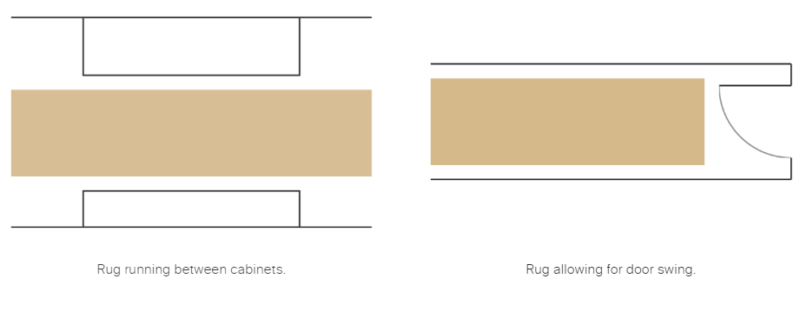
5. Stairway
Runners on stairs transform the staircase into a lovely and safe area of your house. These runners unify the whole house’s style and protect the floor in these high-traffic floor areas. The most typical width is 27 inches for a staircase. For the length of the stairway, multiply the number of steps by 19; that is the total inches of the stair’s vertical riser (8”) and horizontal tread (roughly 10”). Then divide the number by 12; this converts the number into feet.
Then just add 8 inches for an additional riser. For example, a 21’ runner works for staircases with an average of 13 steps. You should add more feet if your staircases have 90-degree turns.
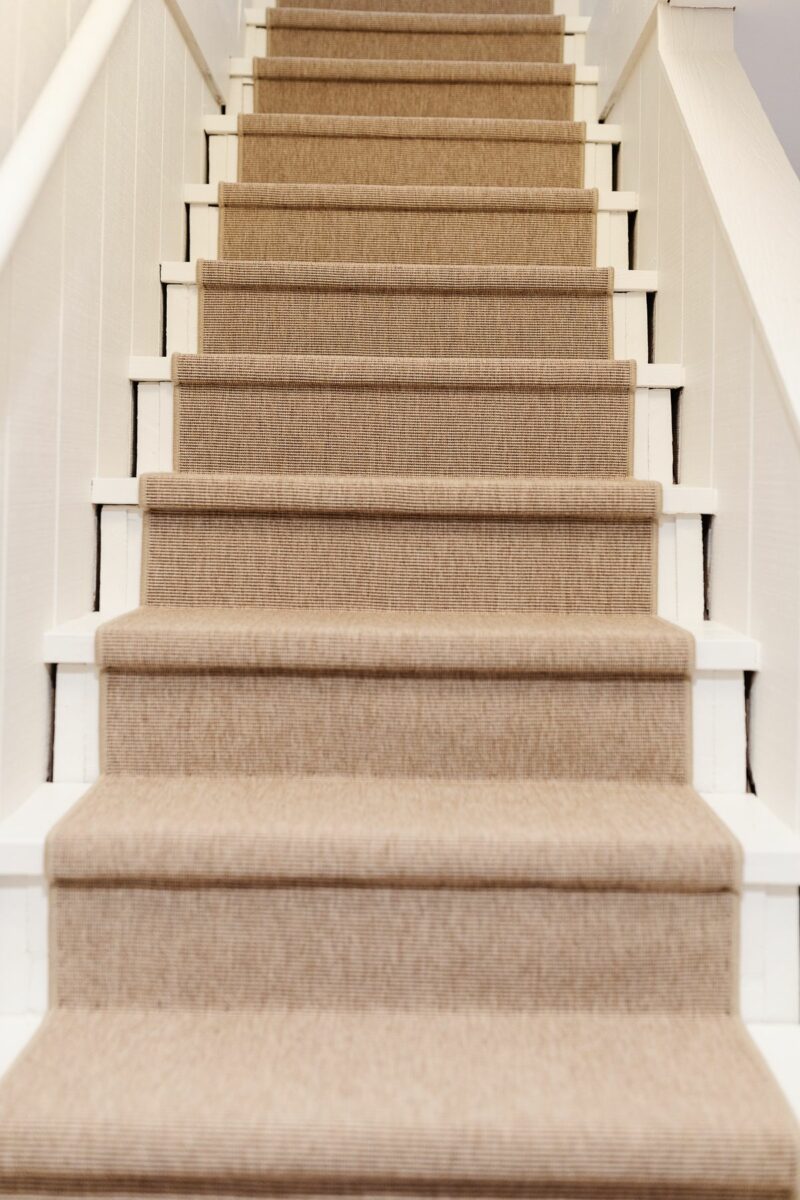
6. Laundry, Kitchen, and Bath
Measure the entire room and the open floor space so that you know which rug sizes and shapes to buy. Since you do a lot of standing in these rooms, pick a comfortable rug that is warm and stylish. Rug pads are essential in bathrooms, kitchens, and laundry rooms. These pads will hold the rug firmly in place so that you do not slip. The rug pad should also be resistant to mold and mildew. One thing to remember is to leave around 1″ of rug overhang on all sides of these rug pads. An ideal rug pad will be 2″ shorter and narrower than your chosen rug. For example, a 5′ x 8′ rug needs a 4’10” x 7’10” rug pad. If the ideal rug pad for your chosen rug is not available, buy a bigger size; you can always cut the rug pad to the dimensions you want, but you can not add it if the pad is too small.
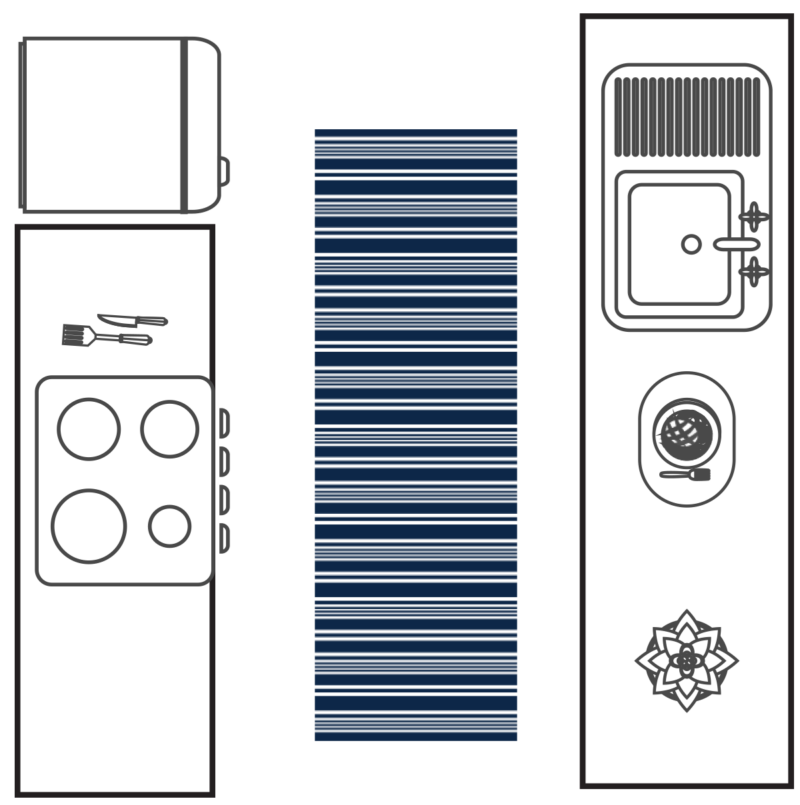
Why Should You Invest in a Rug?
A rug can boost a room’s decor and make it more cozy. It can lay the foundation for the room and improve the room’s aesthetics as you place more furniture and accessories. For visual functionality, rugs can be placed where you can not put any pieces of furniture.
When choosing a rug, look at the quality, size, and style. You want a rug to last a really long time, it should fit into the space of the room where it is placed, and it should match the style of the room.
A rug can be placed in a number of rooms: living rooms, dining rooms, bedrooms, office rooms, closets, kitchens, and bathrooms.
Final Thoughts
Furnishing your home is one thing everybody will do at least once in their life. For some, it is a piece of cake, but for others, it is a mountainous task. Luckily, there are so many decorating guides available if you are stuck or do not have a personal style yet.
One piece of decoration is the rug. A rug can really tie the whole room together, so do not forget about this small item. There are so many rug sizes, shapes, materials, and colors to choose from when picking them for your home.
Please write in the comments below which size rug you picked for the different rooms in your home, why did you pick that particular one, how many rugs are in each room, why a room does not have a rug, and other fundamental rug decorating tips that everybody can appreciate.





